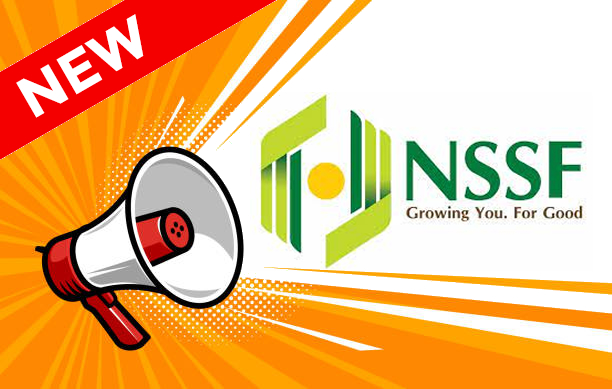Understanding the New NSSF Contribution Rates in Kenya (2025)

Understanding the New NSSF Contribution Rates in Kenya (2025)
As Kenya moves toward improving retirement benefits, the National Social Security Fund (NSSF) has revised its contribution rates, set to take effect in February 2025. These changes will significantly impact both employers and employees, ensuring better social security coverage in the long term.
In this blog post, we break down the new NSSF rates, how they are calculated, and what they mean for businesses and workers.
New NSSF Contribution Structure (2025)
The updated NSSF contribution system is divided into two tiers, each with different pensionable salary limits:
| Tier |
Description |
Employee Contribution |
Employer Contribution |
Total Contribution |
| Tier 1 (Lower Limit) |
Covers employees earning up to KES 8,000 |
KES 480 |
KES 480 |
KES 960 |
| Tier 2 (Upper Limit) |
Covers employees earning between KES 8,000 and KES 72,000 |
KES 3,840 |
KES 3,840 |
KES 7,680 |
How Are NSSF Contributions Calculated?
The 6% rule applies to both employees and employers, meaning each contributes 6% of pensionable earnings. Here’s how it works:
- If an employee earns KES 10,000, only KES 8,000 is considered under Tier 1, while the remaining KES 2,000 falls under Tier 2.
- If an employee earns KES 72,000 or more, their maximum total NSSF contribution (employer + employee) will be KES 8,640.
Impact on Employees
- The increased contributions reduce net salary, but they boost retirement savings.
- Employees earning below KES 8,000 will contribute only to Tier 1, keeping their contributions lower.
- Those earning above KES 72,000 will max out their contributions at KES 8,640 per month.
Impact on Employers
- Employers must match the employee’s contributions, increasing payroll expenses.
- Non-compliance penalties may apply if contributions are not remitted on time.
- Companies need automated payroll solutions, like WinguApps Payroll - EasyPay ®, to ensure accurate deductions and timely submissions.
Key Deadlines and Compliance
Employers must remit NSSF contributions by the 9th of each month to avoid penalties. Late payments may attract fines, adding extra costs to businesses.
How WinguApps Helps Businesses Stay Compliant
With these changes, businesses must automate payroll to avoid errors and penalties. WinguApps' payroll has the following benefits:
- ✅ NHIF & PAYE Compliance – Automatically calculates and deducts NHIF and PAYE taxes based on the latest tax bands.
- ✅ Multi-Currency Support – Allows salary payments in different currencies for businesses with international operations.
- ✅ Automated Statutory Reporting – Generates and submits KRA (P10, P9), NHIF, and NSSF reports to relevant authorities.
- ✅ Employee Self-Service Portal – Allows employees to view payslips, update details, and request leave online.
- ✅ Leave & Overtime Management – Tracks leave balances and overtime, ensuring accurate payroll adjustments.
- ✅ End-of-Contract & Gratuity Computation – Automates terminal benefits and gratuity calculations for departing employees.
- ✅ Multi-Company & Multi-Branch Support – Manages payroll for multiple business entities or branches from a single dashboard.
- ✅ Audit Trail & Role-Based Access – Ensures security and accountability with detailed logs and controlled user access.
- ✅ Cloud-Based Access – Enables payroll processing from anywhere with secure cloud hosting and regular backups.
- ✅ Bulk Employee Upload & Management – Simplifies payroll setup with CSV bulk uploads for large workforces.
- ✅ Customizable Payroll Structures – Supports different pay structures, allowances, deductions, and bonus calculations.
Final Thoughts
The revised NSSF rates aim to enhance long-term financial security for employees. While they slightly reduce take-home pay, they ensure better retirement benefits. Employers should update their payroll systems to accommodate these changes before February 2025.
Would you like to see how WinguApps Payroll can help? Get in touch today! 🚀
Or
Try our NSSF Calculator